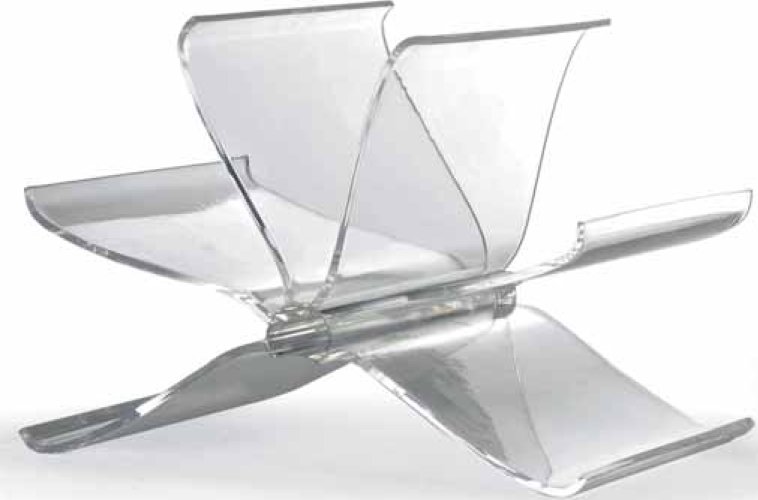There are many materials with high transparency, but combine this quality with toughness, and the most widely available and suitable plastic is polycarbonate. Polycarbonate is popular as the plastic alternative to glass in applications as varied as glazing and drinking vessels. The drinks industry has, for some time, looked to PC as the material to replace traditional glassware for various public drinking venues, where crimes committed with broken glass are an increasing safety problem. It is one of the toughest thermoplastics and this toughness is combined with excellent clarity and to some degree scratch resistance. Although anybody who has ever put one of these glasses in a dishwasher will tell you that it won’t take long for the haziness of a well-used glass to appear. One of the advantages of PC is that it is easily blended with other plastics, such as ABS or PET, to enhance the toughness of these additional materials.
Increasingly, PC has become associated with BPA, a synthetic oestrogen and potential hormone disruptor, which is used as an ingredient to enhance its hardness. BPA can leach from the material during usage and normal wear and tear when the plastic is scratched or stressed. Ultimately, this may result in it being withdrawn from food contact products such as babies’ milk bottles.
Image: Front Page magazine rack by Kartell

Key features
•Versatile processing
•Very tough
•Excellent clarity
•Reasonable hardness
•High operating temperature
•Recyclable
Cost
£2.90 ($4.50) per kg.
Sustainability issues
As with all thermoplastics PC can, if not mixed with fibres, be re-melted and reused (its identified by the recycling symbol number 7). One of the key features of polycarbonate is its ability to withstand high operating temperatures; however, the downside of this is that it requires a lot of heat energy to process it.
Production
Various grades are available, but as a standard material it is used for high-volume, mass-production via injection moulding, extrusion, blow-moulding and even foaming. All of these processes are widely available in standard machines. It is also a material that is available in extruded sheet form, where it is often used for glazing. These are not just flat sheets but also structural ribbed sheets.
Typical applications
It is blended with ABS to add impact resistance for mobile phone casings; its clarity makes it suitable for shatter-resistant windows; its toughness is suited to visors on crash helmets and eyeware. It is also the material of the CD and DVD and was used in the casing in the iconic first generation iMac.
Derivatives
Lexan®
| + | – |
|
–Highly versatile –Easy to work –Tough and resistant –Excellent clarity –Widely available –Recyclable |
–Energy intensive to process –Possible problems with biocompatibility |
